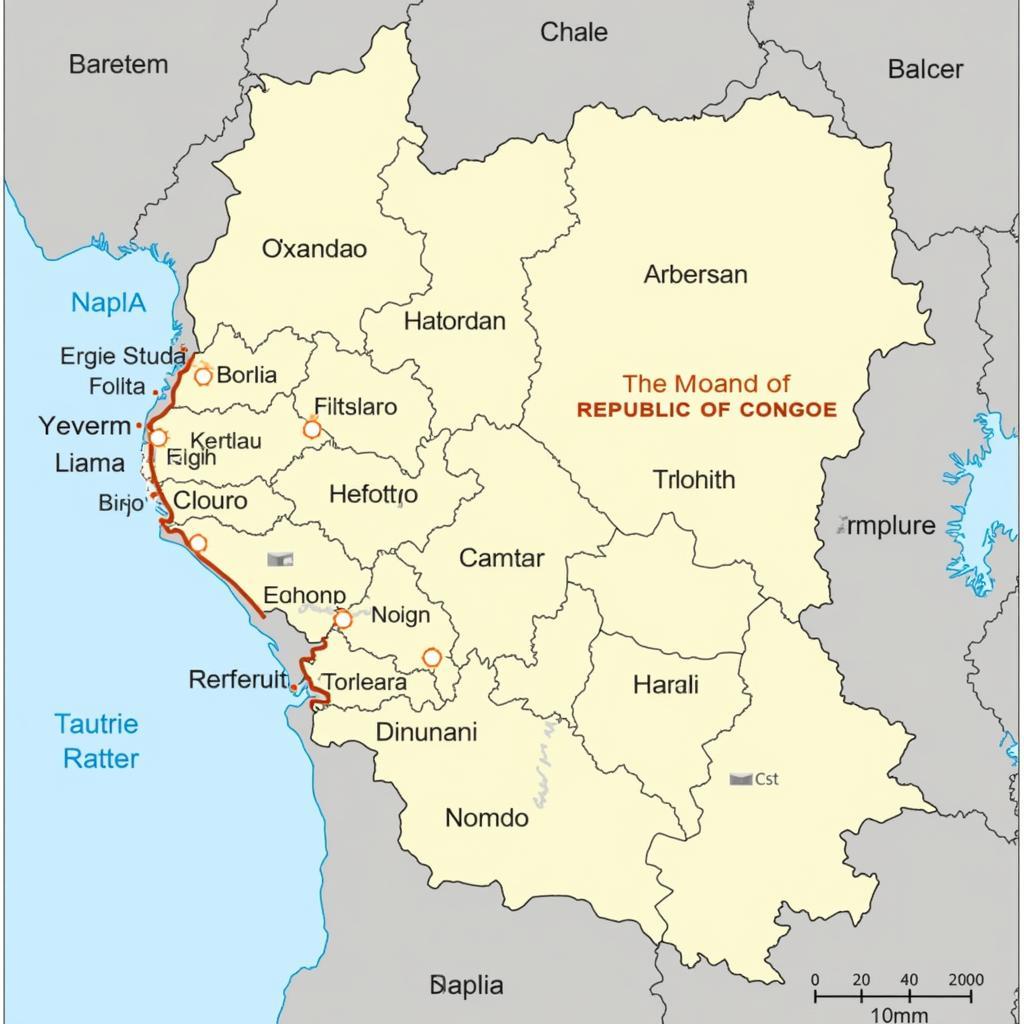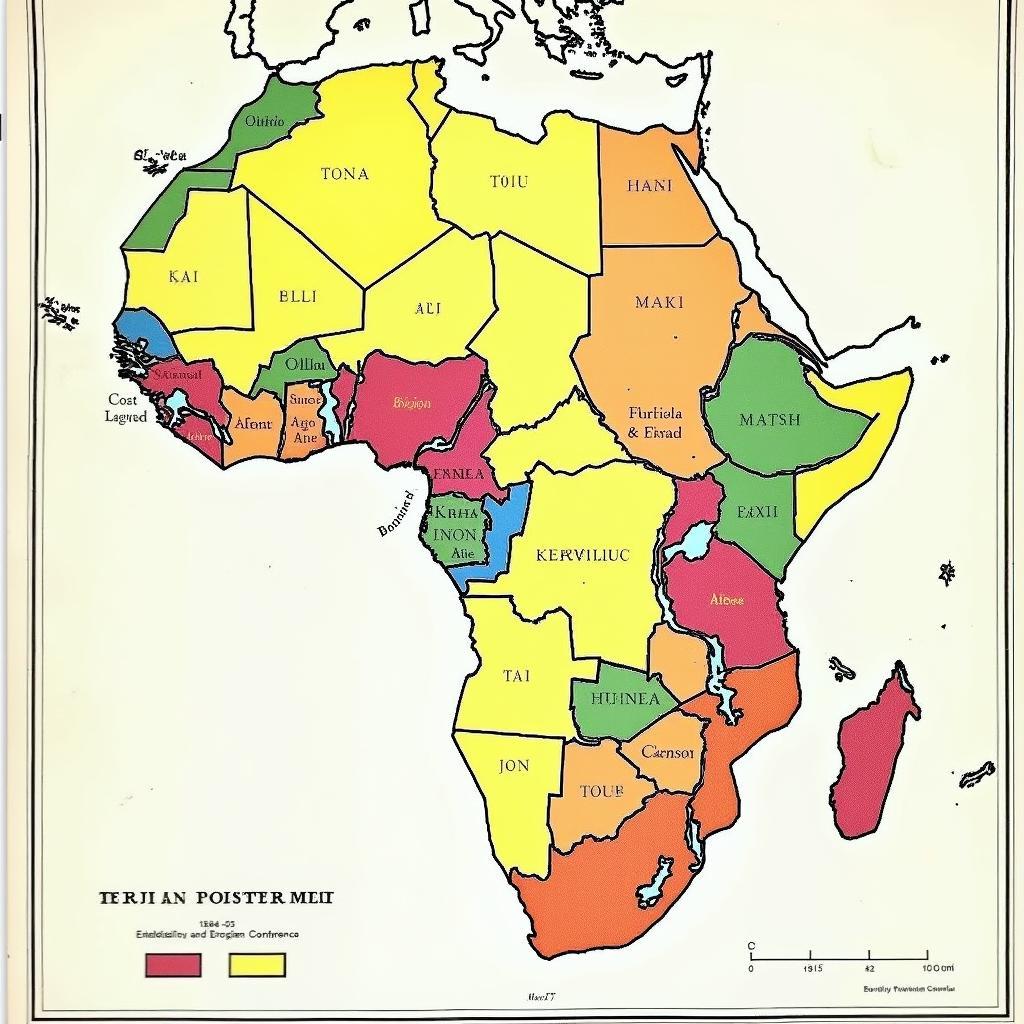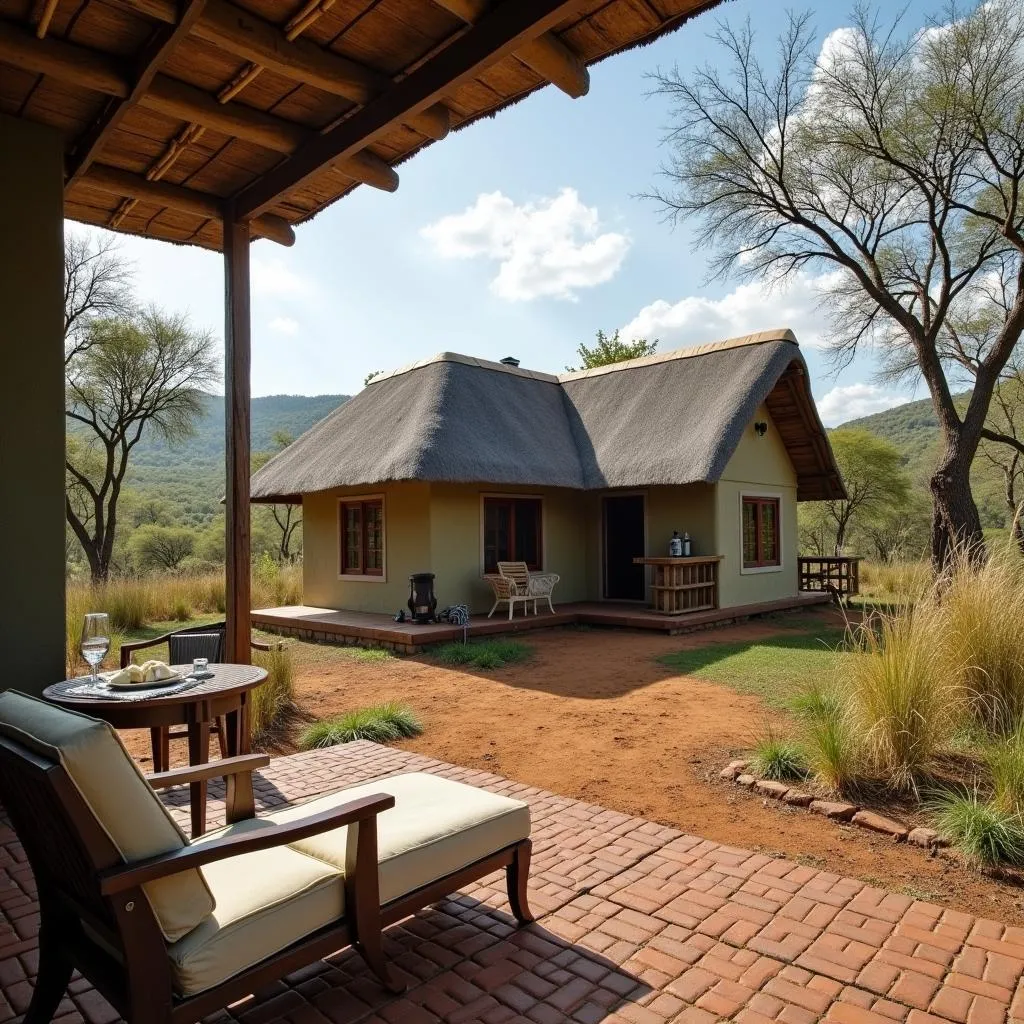Exploring the African Boundary of Congo
The African Boundary Of Congo, a complex tapestry woven from history, geography, and politics, presents a fascinating study for anyone interested in the heart of Africa. This vast nation, formally the Democratic Republic of Congo (DRC), shares borders with nine countries, making its frontiers some of the most extensive and diverse on the continent. Understanding the African boundary of Congo is crucial to grasping the region’s geopolitical dynamics and the challenges and opportunities it faces.
A Deep Dive into Congo’s Borders
The DRC’s extensive borders span thousands of kilometers, encompassing diverse landscapes ranging from dense rainforests to towering mountains and sprawling savannas. These boundaries, established during the colonial era, often disregarded pre-existing ethnic and tribal territories, leading to lasting impacts that resonate even today. The nine countries bordering the DRC are Angola, Burundi, the Central African Republic, the Republic of Congo, Rwanda, South Sudan, Tanzania, Uganda, and Zambia. Each border presents unique characteristics and challenges, shaped by historical interactions, trade relations, and the movement of people. These interactions have fostered both cooperation and conflict, influencing the political and economic landscape of the entire region. Understanding this intricate network of relationships is key to appreciating the complexities of the African boundary of Congo.
 Map of Congo's Borders with Neighboring Countries
Map of Congo's Borders with Neighboring Countries
The Historical Context of the African Boundary of Congo
The African Great Lakes Initiative addresses many cross-border issues in the region, including those related to the DRC. The boundaries of the DRC, largely defined during the Berlin Conference of 1884-85, reflect the arbitrary divisions imposed by European colonial powers. This period, characterized by the scramble for Africa, left a legacy of artificial borders that often divided communities and ignored traditional territories. The resulting ethnic tensions and resource disputes continue to challenge the stability of the region. Understanding this historical context is crucial for analyzing the current political and social landscape surrounding the African boundary of Congo.
 Historical Map of Africa Showing the Outcomes of the Berlin Conference
Historical Map of Africa Showing the Outcomes of the Berlin Conference
Challenges and Opportunities at the Border
Navigating the porous borders of the DRC presents significant challenges. Issues such as cross-border crime, the illicit flow of resources, and the movement of refugees and displaced populations are constant concerns. The African boundary of Congo has also been a focal point of several regional conflicts, further exacerbating these issues. However, these borders also present opportunities for regional cooperation and development. Increased trade, cross-border infrastructure projects, and joint efforts to manage shared resources could significantly benefit the entire region. You can learn more about the complexities of these borders in this article about the African boundary of Congo. Furthermore, understanding the impact of environmental challenges like the African forest fires 2020 is crucial to sustainable development in the region.
What are the main challenges faced by communities living along the border?
The main challenges faced by communities living along the border include poverty, lack of access to basic services, insecurity, and displacement due to conflict.
What are some of the economic opportunities offered by the border region?
Some of the economic opportunities include cross-border trade, tourism, and the sustainable exploitation of natural resources.
The Future of Congo’s Borders
The future of the African boundary of Congo hinges on fostering regional cooperation and stability. Strengthening border management, promoting sustainable development initiatives, and addressing the root causes of conflict are crucial for ensuring a peaceful and prosperous future for the region. The African Language حد, while not directly related to the borders themselves, plays a role in the cultural exchange and understanding necessary for effective cross-border cooperation.
Conclusion
The African boundary of Congo is far more than just a line on a map. It represents a complex interplay of historical legacies, geographical realities, and political dynamics. Understanding this intricate border region is essential for comprehending the challenges and opportunities facing the heart of Africa.
FAQ
- How many countries border the DRC? Nine countries border the DRC.
- When were the current borders of the DRC established? The current borders were largely established during the Berlin Conference (1884-85).
- What are some of the main challenges at the border? Cross-border crime, resource smuggling, and refugee flows are some of the main challenges.
- What are some of the opportunities presented by the border region? Opportunities include increased trade, cross-border infrastructure projects, and joint resource management.
- What is the importance of regional cooperation in managing Congo’s borders? Regional cooperation is essential for addressing cross-border challenges and promoting stability.
Other questions you might have could be about specific border disputes, the impact of climate change on border regions, or the role of international organizations in border management. You can find more information about the African Great Lakes Initiative on our website.
When you need support, please contact Phone Number: +255768904061, Email: kaka.mag@gmail.com or visit our address: Mbarali DC Mawindi, Kangaga, Tanzania. We have a 24/7 customer service team.
